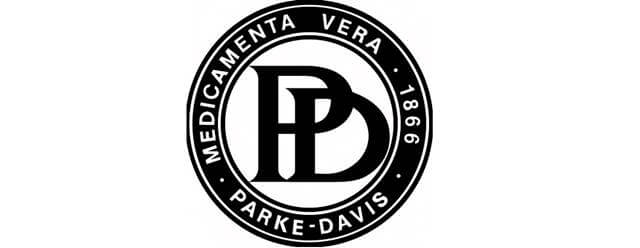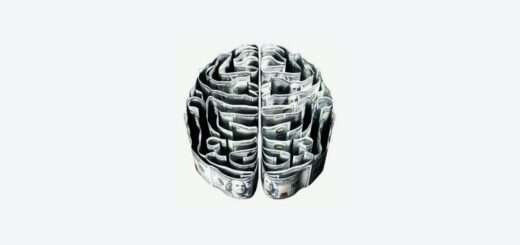Report on COST ACCOUNTING SYSTEM OF PARKE-DAVIS
PARKE-DAVIS MISSION STATEMENTS:
TO OUR CUSTOMERS
We commit ourselves to anticipating customer needs and responding first with superior products and services. We are committed to continued investment in the discovery of save and valuable products to enhance people’s lives.
TO OUR SHARE HOLDERS
We commit ourselves to providing fair and attractive economic returns to our shareholders. We are prepared to take prudent risks to achieve sustainable long-term corporate growth.
TO OUR COLLEAGUES
We commit ourselves to attracting and retaining excellent people, and providing them with an open and participative work environment marked by equal opportunity for personal growth. Performance will be evaluated candidly on the basis of fair and objective standards, creativity, speed of action, and openness to change will be priced and rewarded. Colleagues will be treated with dignity and respect. They will have the shared responsibility for continuously improving the performance of the company and the quality of the work life.
TO OUR BUSINESS PARTNER
We commit ourselves to dealing with suppliers and other business partners, fairly and equitably, recognizing our mutual interests.
TO OUR SOCIETY
We commit ourselves to being responsible corporate citizens, actively initiating and supporting efforts concerning the health of the society and stewardship of the environment. We will work to improve the vitality of the worldwide committee in which we operate.
ABOVE all, our dealings with these constituencies will be conducted with the utmost integrity, adhering to the highest standards of ethical and just conduct.
PARKE-DAVIS
COMPANY PROFILE
PARKE-DAVIS, one of the largest manufacturers of pharmaceutical and biological preparations in the world as established in USA in 1866. Early from its inception, emphasis on the best in quality and reliability has earned the company, a leading position in the pharmaceutical industry all over the world.
The company is part of the Warner-Lambert worldwide group, which conducts its business in more than 140 country employees, approximately 45,000 people, operates more than 100 manufacturing facilities and maintains four major Research Centres.
Apart from historical achievements made in pharmaceutical discovery and development, introduction of the principle of standardization of medical products is a contribution PARKE-DAVIS has made to the profession of medicine and pharmacy. This concept ensures that every bottle or package of every lot produced has the same strength or potency as every other unit. The entire industry subsequently adopted this concept of standardization.
PARKE-DAVIS was incorporated in Pakistan as a Private Limited Company in 1960. 1963, the company constructed its ultramodern centrally air-conditioned plant at Karachi, where a wide range of Parke-Davis world renowned products, previously imported are now being manufactured. It employs over 400 people and the plant equipped with modern facilities to maintain the same standard and quality of products, as those produced anywhere in the world.
In June 1983, the company offered its shares for public subscription and was converted into a public limited company. The company also acquired the share of its associated company Warner and Lambert (Pakistan) Limited and the merger of the two companies was completed in November 1984.
In the last five years it has invested RS. 278 millions for improving productivity, enhancing GMP, safety and environment and bringing in the latest MIS solutions. It’s integrated its software PRSIM, is the only one of its type in Pakistan.
GMP, Safety and Environmental compliance is the foremost criteria of performance and the waste management implemented where by all types of industrial is either recycled or incinerated in worth emulating by other companies.
The company was amongst the top 25 companies declared by Karachi Stock Exchange for the three consecutive years that is 1984, 85 and 86. It was also awarded Excellence Certificate for 1987 and the coveted Corporate Excellence Award for the Year 1994,95 and 96 by the Management Association of Pakistan.
Park-Davis success can be attributed to its implementation of MVP (Management Value Practices) which can be summarized under:
- Price creativity
- Be fast and first to opportunity
- Focus on what is important
- Be open and candid
- Reward true success
The people at Parke-Davis are following the motto “We are making the world feel better”.
AN INDUSTRY OVERVIEW
As per results of IMS compiled at the end of quarter 1,1999, the industry recorded a growth of 8.6%, while last year for the same period, growth of only 1.2% was recorded.
At the end of 1997, the average return on investment figures was 9.5%.
The total number of registered products available in the market is about 20,000, which is a gain of 20% over the last year. As of December 1997, the total Pharmaceutical market in Pakistan is worth Rs. 35, 269, 648. In 1997 it had a market growth rate of 4.5%. The total estimated Pharmaceutical market in Pakistan is of US $ 759 million, which represents only 0.32 % of the estimated world market of US $ 233billion.
MAJOR ISSUES IN PHARMACEUTICAL INDUSTRY
RISING COST OF RAW MATERIALS
One of the main problems the pharmaceutical industry is presently facing is the high cost of imports. In addition to this, the devaluation of rupee (approximately 17% during 1995-96) has increased the cost of raw materials needed by various pharmaceutical companies for manufacturing.
Pakistan produces less than 1% of basic pharmaceutical raw material and that too not from stage one but by importing intermediaries.
PRICE CONTROLS
The price controls put on the pharmaceutical industry has also put a great deal of pressure on the industry.
LOSS OF PATENT RIGHTS
Due to the world Trade Order Agreement to be implemented in the year 2002, some 40 drugs with a sale volume of $ 16 billion are set to loose their patent rights.
DEMAND EXCEEDS SUPPLY
Apart from about 65-70 quality manufacturers out of a total of 330, the remaining are operating at less than one-third of their capacity, and therefore only fulfilling 80% of the total demand.
TRANSFER PRICING
Transfer pricing is a practice carried out by MNC companies whereby the parent companies charged a considerable mark-up on raw materials supplies to their subsidiaries.
The basis of transfer pricing could be:
- Cost + mark-up
- Market price
- Percentage of market price
- Percentage of labor cost
- Cost of finish less cost of initial products
Almost all of multinational subsidiaries buy from their parents. These price differentials range between 50 and 5000 percent over the lowest priced drug.
While importing the basic raw materials from the parent companies at inflated prices MNC’s defend their positions by the arguments that the profit earned this way goes to the Research and Development of new products.
TRENDS TOWARD MERGERS
QUALITY CONTROL
PROBLEMS OF LOCAL MANUFACTURERS
Local manufacturers find it difficult to export their surplus output to other markets because of low prices in countries like China, India, Taiwan, Eastern Europe and Korea.
FAKE MEDICINES
The government rigid cost controls have also resulted in shortages and mushrooming of fake spurious medicines flooding the market.
GENERIC COMPANIES
Generic companies are also on the rise. Generic companies offer medicines of inferior qualities at a lower cost, in comparison to the branded medicine.
LAW AND ORDER SITUATION
The law and order situation over the past year lead to a great deal of losses for the industry, due to loss in productivity as well as problems in distribution.
BUREAUCRACY
There is a great deal of bureaucratic red tape involved in the registry of the new product.
MERGER
WHAT THE MERGER MEANS IN PRACTICE?
- Pfizer and Warner Lambert merger will form the second largest global company with the international market share of 6.5%.
- Board of directors and Management teams will be from both companies with William C.Steere, Jr. as chairman and Chief Executive Officer and Dr.Henry Mc Kinnell as President and Chief Operating Officer.
- Pfizer shareholders will own 61% of the newly created & 90 billion organizations and Warner Lambert shareholders will own 39%.
- Warner-Lambert shareholders to receive 2.75 Pfizer shares for each Warner-Lambert share, valued at $98.31 per share
- Compounded three-year annual earnings growth of 25% forecast with $1.6 billion in cost savings by 2002; Companies to realize operational and sales benefits, increase annual research and development expenditures to $4.7 billion in 2000
- Leadership in therapeutic areas includes cardiovascular, lipid lowering, central nervous system and infectious diseases; 138 compounds in development in complementary pipelines
- New company to be named Pfizer Inc, will integrate “In a Spirit of Partnership and Mutual Respect”
- The merger will be completed by mid of this year.
- The merger between Warner Lambert and American Home Products has been terminated.
- The combined company will have annual revenues of approximately $28 billion, including $21 billion in prescription pharmaceutical sales, and will have a market capitalization in excess of $230 billion.
- Compounded annual revenue and earnings growth is expected to be 13 percent and 25 percent, respectively, through 2002. The transaction will be accretive in the first full year of operations and will use pooling of interests accounting.
- The two organizations, having worked together for several years to achieve the unprecedented success of Lipitor, will bring the same energy and intensity to achieving the most rapid and seamless integration of the two companies.”
- Unprecedented depth and breadth of products including seven billion-dollar products: Norvasc, Lipitor, Zoloft, Zithromax, Diflucan, Celebrex and Viagra. The Parke-Davis trade name will be preserved and represented through the product portfolio, a dedicated sale forces and researches organization.
- Parke-Davis brings to Pfizer valuable expertise in this area and a sales force that has extensive experience in calling on mental health professionals.
- Excellent opportunities for additional earnings growth based on anticipated cost savings and efficiencies totaling $1.6 billion. Two hundred million dollars of these savings are expected to be achieved by year-end 2000, $1 billion by year-end 2001, and $1.6 billion by year-end 2002.
WHY WE HAVE MERGED?
Four Industry wise global market trends:
- A slow down in market growth.
- A number of key patents due to expire.
- Research and Development costs are rising significantly.
- E-Commerce is changing the way we do business.
We need to rebalance our product portfolio, reducing our reliance on a small number of core products and we need to speed up our pipeline.
WHAT THIS MEANS FOR PARKE-DAVIS IN EUROPE AND ASIA
- The Parke-Davis name is one of the oldest and most respected names in pharmaceuticals. Our name will continue to be represented through the combine product portfolio and through dedicated sales force.
- We will have more opportunities to create new markets with our existing products and share the success of our unrivalled combined portfolio. No other company will cover the range of therapeutic areas with so many market-leading products.
- More opportunities to launch and support new products with R&D function of over 12,000 people and annual budget of $ 4.7 billion much more than any of the competitors.
- Strong international presence with access to global markets including Japan and confidence that comes from being a top player in each.
- Combined consumer product sale of more than $ 3.5 billion, giving us a significance stake in the consumer health care market.
HOW WILL THE MERGER MOVE FORWARD
- Our goal remains to complete the merger agreement by July. There are a number of statutory and regulatory hurdles we need to clear over the course of next few weeks. This includes the 30 days review period by security exchange council in USA to give ruling on the financial structure of the merger.
- In the mean time we have set up a joint transition steering committee led by Tony Wild and Hank Mc Kinnel to identify the best way forward for integration and to set out a clear path to make it happen. Putting the merger into action will be the responsibility of our operational line managers who will drive the transition at the local levels.
- Our aim is to build an organization that harnesses the very best from our people, our practices and our facilities. We will be asking for your ideas and contributions across the organization to help shape the new company and create the structure, system and process that will help us deliver the goal. We will keep u informed of the progress and upto date with the challenges and situations we will undoubtedly face in the upcoming weeks. All the feed back will be collated and summarized at the affiliate level and forwarded to the European management.
PRODUCTS AND PROFITABILITY
Parke-Davis currently has 42 products at its disposal out of which 32 are available in the market. The market share according to the company’s information is 2.9% and has growth rate of 12 – 14%. The growth is mainly attributable to the volume growth of the company’s diversified products range as only nominal price increase was granted during the year.
The new ace-inhibitor Accupril introduced in 1996 captured significant market share in the anti-hypertensive market in a very short period of time .Out of all its product Ponstan (Analgesic) capture more than 40% of the company’s total sales. The drugs in most of the cases are ethical or prescribed drugs and the Drug Law of Pakistan do not allow the commercial promotion of the pharmaceutical products.
The other leading products of Parke-Davis is Benadryl, Chloromycetin, Basoquin, Gelusil, Benatuss and Mylanta-2.Most of these products is manufactured at its SITE plant. 98% of the raw material is imported to meet the requirements for the production. Thus profitability of the product depends on the cost of the raw material which can subjugated directly through the policies of the Government of Pakistan which includes taxes devaluation of the Rupee, and the increase in cost of fuel & energy.
OPERATING RESOURCES
The operations resources are the resources that an organization needs to produce its output. Being a pharmaceutical company the operations of the company include the production, sampling and packaging of the drugs and medicines. All the equipment and machinery, and also the Quality Assurance department in the case of Parke-Davis, is included in the operational resources.
With due concern to my report I will only be discussing the Operating Resources of Parke-Davis.
FUNCTIONING AND CAPACITY OF THE PLANT:
Plant and equipment are fully automated and hence require few worker performances. These machines usually perform all the preparations of pharmaceutical products, without any interruption by human hands. This adds significantly to the quality and reliability of the Parke-Davis products.
The plant equipment consists of two fully automated belts for packaging of tablets and capsules. There are also three imported blister-pack machines. The bottles for liquid medicines and for containing tablets are manufactured locally.
Approximately 97% of the raw material of the Parke-Davis’s are imported. Main countries of import are UK, USA, France, Japan, Germany, Irish Republic and Switzerland.
As far as the machinery is concerned, major source of machinery is Germany, followed by Japan.
THE PRODUCTION PROCESS
The production process can be briefly described in three steps:
|
|
|
The detailed procedure is described below.
- Issue Requisition:
The materials that are used for the production process are first requisitioned. The material requisition is a formal process in, which a “Material Requisition Ticket” is issued.
It enlists the date, the amount of material and the job for which the material is being issued. For every process the requisition ticket is prepared however meager the amount may be. If, by chance the material is sent back the subsequent adjustments to the raw material accounts are done accordingly.
- Production—Work In Process:
The materials that are requisitioned by the production personnel are then taken to the actual production plant. The nature of material determines which process it is to undergo. The material undergoes several production processes depending upon the complexity of the product involved.
For example, the prime product of Parke-Davis, Ponstan, requires at least three different processes. First the raw material is washed, so as to remove the impurities involved. Then it is treated with Sodium Hydroxide. It then undergoes the various plant processes to appear in powdered form. It is then solidified and attains the shape of tablets.
- Packaging:
The finished product although has all the necessary qualities of a packed product, however, the unpacked product loses its effectiveness due to dampness in the atmosphere and various other chemical reactions. Parke-Davis has three automated Blister Machines, which pack the tablets into blisters of 10 tablets each (or the desired quantity).
As far as the liquid products (bottled products) are concerned, quality-conscious personnel packing them and then lid is placed.
- Bulk Packaging:
Initially the finished products are packaged into large or bulk quantities for storing purposes. However when the actual distribution occurs, the product is packed into separate small-quantity packs of 10 tabs or 100-ml bottle for liquid products.
- Ware House (Finished Goods):
The finished products are not sold off instantaneously, but are kept for the time being in the storeroom or warehouse.
This may occur because:
- There is no immediate demand for the product in the market so is being stored for later dispatch
- There is extreme demand for the product, however in anticipation of markup over the stipulated prices; the products are not being released to the market.
- Invoices Received:
The finished products are sold to the final consumers through supplier chains and retailers. When the products are sold, the company receives invoices for the finished products. These invoices, within due time convert into Accounts Receivables, which on collection serve to fulfil the cash requirements of the company.
VARIANCES
They allocate budget to each cost center at the beginning of the year. The budget is allocated considering previous year’s performance, state of economy, state of industry, inflation rate, interest rates and sales forecast. Each cost center submits its report at the end of period. The actual and budgeted costs are compared and actions are taken in case of deviations frequently. It increases the efficiency of control process. They are enjoying favorable variance in purchase of raw materials.
Following variances are calculated monthly:
RAW MATERIAL
- Raw material usage variance
- Finishing supplies usage variance
- Material yields variance
LABOUR VARIANCES
- Rate variance
- Efficiency variance
FACTORY OVERHEAD VARIANCE
- Price variance
- Efficiency variance
- Production volume variance
RECOMMENDATIONS
After analyzing the company problems and production process I come up with the following solutions to them.
- Price increase: As pharmaceutical prices are regulated by government of Pakistan and no price increase has been offered since Nov, 1996 which has plagued the growth and profitability of the industry. The Parke-Davis also experienced the declining trend in all variables of profitability and growth. Recently government has given 10% increase in prices to pharmaceutical industry, which will improve the health of the company. The government should take steps to provide congenial environment to the growth of the sector.
- RESEARCH DEPARTMENT: Increasing cost of raw material in the face of no price increase has increased the burden on the purchasing department. The price increase by the government will also reduce the burden on the purchasing department which has become extremely efficient and effective in the last few years because the profitability of the operations entirely depend on the purchasing department. The company must set up research department which will keep eye on the international prices of the raw material and will provide access to the cost efficient raw material.














